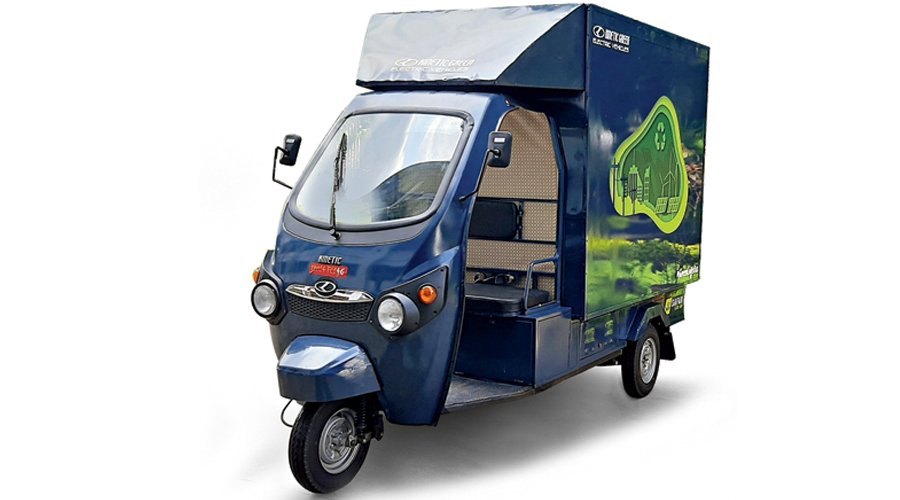How electric vehicles (EVs) would proliferate in India:
In India there is no question that electric mobility will be dominated by the small EV — like the three-wheelers, two-wheelers, maybe a small LCV, or small car. India has a unique transportation sector. First of all, 85 per cent of the people commute on two-wheelers, three-wheelers and in buses, and only the privileged, maybe 15 per cent, use cars. That’s a large part of the automotive market. This is in contrast to Europe or the US, which are predominantly a car-dominated transportation economy.
Second, in a developing market like ours, if you want to make an impact of a new technology it has to reach the masses. And that’s when we will see the fuel security, the fuel import bill coming down, pollution levels getting down and transport becoming more affordable because that’s where the numbers are. If you bring a few lakh cars you might not achieve the objective.
Third, for the intra-city vehicles, you don’t need to give a range of more than 100km in a day because that is the maximum that they move on a two- or a three-wheeler and they can come back to their homes and charge the vehicle. And you don’t need a charging infrastructure on the highways because these vehicles don’t go on the highways. So it’s quite easy to provide quick electrification because you don’t need charging infrastructure as a pre-requisite. As the vehicle population keeps going up, charging infrastructure can keep coming up parallely so that charging support can be augmented, but it is not a pre-requisite like it is for the cars. Like in a car, if you don’t have charging infrastructure, you have to have a 200km-300km range on your vehicle; it will become too expensive because battery is very expensive. But in two-wheelers, three-wheelers, buses, speed, distances are all restricted. So you can easily give electric solutions.

Sulajja Firodia Motwani, founder and CEO of electric vehicle company Kinetic Green. Sourced by the correspondent
Battery swapping can change the game:
Another thing that is coming up in India in a big way to support this is the battery-swapping network. So all [oil] companies — HPCL, BPCL, IOCL, along with private partners — are looking at setting up battery-swapping points at their existing gas stations. So, like we go to fill CNG, petrol or diesel to a gas station, you’ll go and take a battery. That becomes like fuel. And with that there will be no range anxiety and the cost of the vehicle will be drastically lower because you are buying the vehicle without the battery, which the government has legalised. So now you can register an EV without a battery to support this entire swapping revolution.
You don’t really need to standardise the battery. You can simply standardise the connectors and the battery tray to allow some form of portability within the energy players or you can even begin with a closed-loop system like our telecom. Earlier, we started with customers for Vodafone, BPL, Idea and so on and portability came later. So I think this will also evolve the same way that it may begin with a system, where you are a partner with, say, Ola Electric, or BPCL, or whoever is the energy operator for the battery and you go to their stations. And eventually, over time, the government might come up with regulations to standardise parts of this so you can change from one operator to another. So it’ll evolve.
Attracting users to EVs:
Battery swapping makes the upfront cost of the vehicle attractive because it reduces the cost by 50 per cent. Your electric vehicle will now cost lower than your ICE (internal combustion engine) vehicle. So it will promote electrification in a more rapid manner. It’s actually dramatic — 40-45 per cent of the cost of the vehicle is the battery.
So I will give you a two-wheeler example. A [Honda] Activa [scooter] now costs around Rs 85,000. Today, an electric scooter of good performance will cost around Rs 1.1 lakh. Out of this, Rs 40,000-Rs 50,000 is battery because when you have a vehicle of higher performance, the battery is also a larger 2.4kWh or 3kWh. The moment you remove the battery and go on swapping, your scooter will cost Rs 70,000 or Rs 72,000. Which is lower than the cost of the equivalent Activa or [TVS] Jupiter or the like. So it will make more people think about choosing electric because even though TCO (total cost of ownership) is more attractive even if you bought the vehicle with a battery — over a period of three or four years you’ll end up saving 40-50 per cent because charging costs much less than petrol — but that initial price shock is still what people are concerned about. So they don’t want to pay Rs 1.1 lakh, but for the moment they have to pay Rs 70,000 or Rs 75,000…. So that’s what battery swapping does. It’s the disruptive thing that’s coming up.

The tipping point for EVs:
If you were to buy electric vehicles with batteries, then, in my opinion, with the falling prices of batteries, today they are about Rs 160-Rs 170 per kWh for the cell, but the moment it comes down to Rs 100-150 then the final cost of the battery also comes down by another 20-25 per cent, you will achieve parity. That means an electric scooter with battery or an electric three-wheeler with battery will cost the same as an ICE vehicle without the fuel. So that point also is not very far away. It’s just about a year or year-and-a-half away. I think that it will also be fairly objective for customers to say since the vehicle cost is the same but I have more fuel cost, I am going to not spend the Rs 75,000 in the next three years which I would have on petrol. My electricity cost is a fraction of that. So I think that can be a tipping point. There would be a dramatic shift in the price attractiveness of EVs, especially small EVs. I am talking about two- and three-wheelers, not cars. So the tipping point is close for what is called light mobility, smaller vehicles, and the moment we come close to that point we can expect a larger penetration of electric mobility to reach the mass scale. So I don’t think that projections like 30-40 per cent electric two- or three-wheelers in 10-15 years is unrealistic. Because the moment we achieve the parity and the benefit of the technology becomes more apparent, more people will shift to it, more manufacturers will make them and, therefore, the whole eco system will get even stronger.
Plans for Kinetic Green:
We have our hands full right now with our electric three-wheeler project and expansion plans and the golf cart joint venture that we have set up with Lamborghini. And we are currently developing a gorgeous range of electric golf carts and buggies which are designed in Italy but will be made in India and sold around the world, including India. This range will be launched in the first quarter of next year.
In electric three-wheelers also we are moving up the value chain quite rapidly. So from low-speed three-wheelers we have now launched our high-speed platforms beginning with the range of electric cargo solutions. We now have a range called Safar Star with 400kg and 500kg payloads and a top speed of 40kmph and 55kmph. So with this half-ton vehicle we are entering the mass segment which is suitable for ecommerce distribution, FMCG deliveries. And this vehicle we are expecting will have great potential over the next two-three years when ecommerce is absolutely booming, home delivery is booming, and we will have the best and widest range of electric last-mile delivery solutions in the country. So with all this we have our hands full right now for the next 12 months at least.











